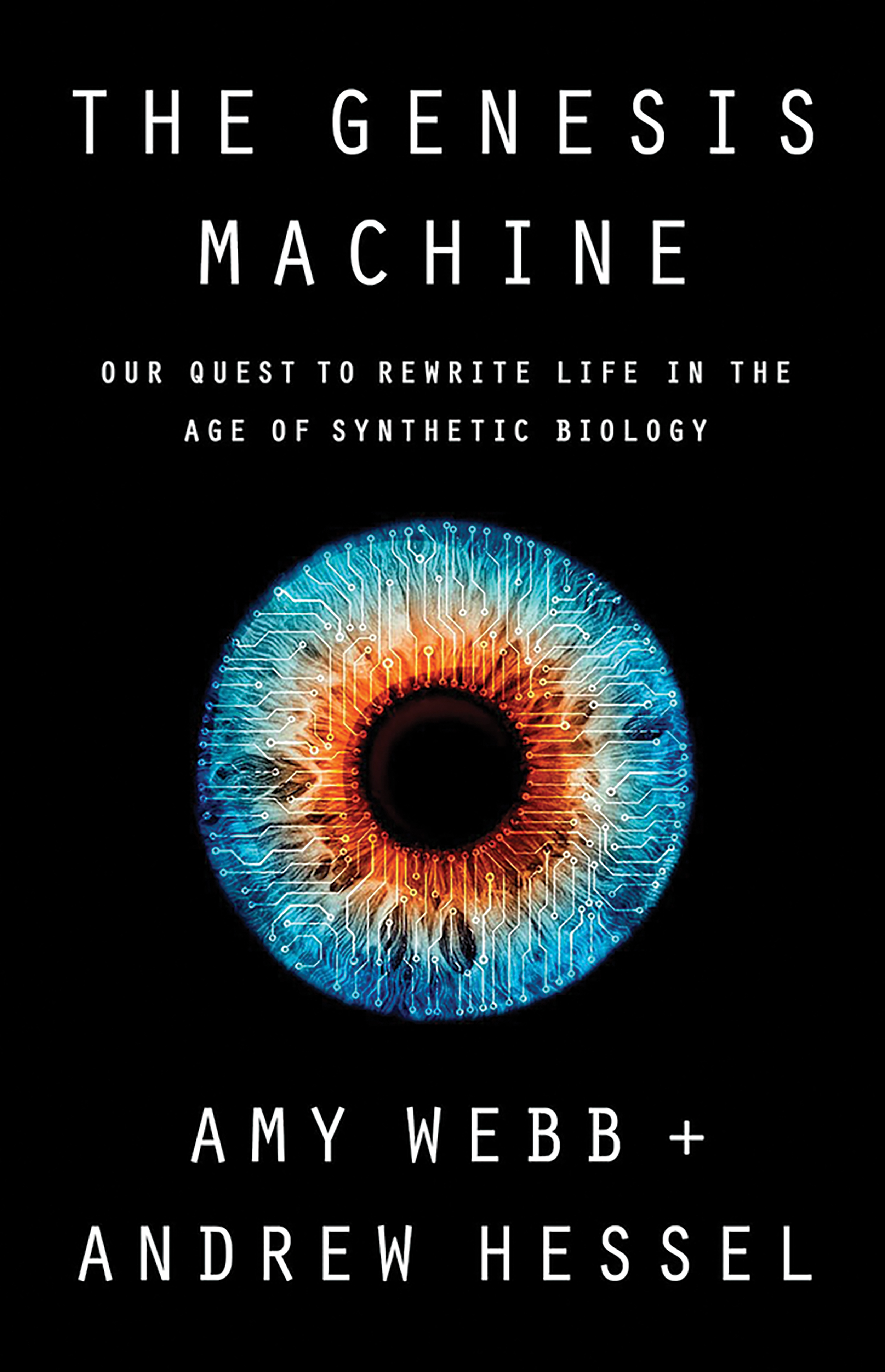Download PDF
Dr. Diane DiEuliis is Assistant Director and Distinguished Research Fellow in the Center for the Study of Weapons of Mass Destruction, Institute for National Strategic Studies, at the National Defense University.

The Genesis Machine: Our Quest to Rewrite Life in the Age of Synthetic Biology
By Amy Webb and Andrew Hessel
New York: PublicAffairs, 2022
368 pp. $29
ISBN: 978-1541797918
Reviewed by Diane DiEuliis
Emerging biotechnologies, particularly as the COVID-19 pandemic recedes, have captured the imagination, interest, and concerns of the world. Scenarios once relegated to science fiction movies and novels are now potentially within the grasp of bioengineering: the ability to read, write, and edit DNA—the fundamental code of life. The purposeful design of biology can enable novel ways to meet a variety of societal needs—from the biomanufacturing of commodities to gene therapies and the recreation of once-extinct organisms. This biological revolution, or “bioeconomy,” has the potential to address important issues such as climate change, sustainable energy, and food production, as well as improved medicines and quality of life for all. But with this capability comes dual use (that is, not only for commercial/military use but also by good actors/bad actors) as well as profound ethical concerns, making The Genesis Machine a timely volume.
The authors—Amy Webb, a journalist and futurist, and Andrew Hessel, a pioneering geneticist—begin their story in personal terms, each revealing how the adoption of biotechnologies in her or his own life has been transformational in enabling her or him to have families. This sets the stage for a well-narrated journey through the history of biotechnology progress, from early pharmaceutical triumphs such as insulin to the synthetic biological creation of artemisinin, which is used in the treatment of malaria. For those new to biotechnology as well as those who work in the field, the personal stories of those involved in the earliest discoveries that punctuated disruptive progress in the life sciences are one of the most entertaining aspects of the book. The anecdotes surrounding serendipitous discoveries, along with the quirks of biotechnology’s most famous pioneers, are not commonly known and give great depth to this historical background.
With this foundation, Webb and Hessel launch into the varied potential of bioengineering and provide helpful background on the components of the bioeconomy, including some discussion of the dual-use concerns associated with these possibilities. Although the book does touch on some of the “non-life sciences” outputs of the bioeconomy, such as biofuels or DNA as digital data storage, it is primarily focused on the human impacts of bioengineering. The authors focus throughout on medicine, health, reproduction, and agriculture—the primarily “traditional” sectors in which biotechnology exists. However, biotechnologies are more likely to commercially advance (in the near term) with biomanufacturing—moving from petroleum-based platforms for manufacturing to biologically based ones—and how this affects the planet will be important. Another missing scenario might be the unknown ecological consequences of the reintroduction of an extinct species, like the woolly mammoth, for example, for which efforts are already under way. This does not detract from the book, however, given that there is much to be learned from the human-impact scenarios described—the scenarios are as fascinating to entertain as they are ethically challenging and would make for creative discussions in the classroom.
The Genesis Machine provides some windows into the current policy landscape and highlights most current governance; however, this book should not be construed as a treatise on policy or a primer for would-be life sciences policymakers. It does not describe how biodefense or biosecurity policy evolved in reaction to biotechnology advances, which is the parallel understanding needed to understand why current policy may be inadequate and where gaps exist. Similarly, although it discusses dual use, it does not dive into weapons scenarios, nor does it touch on the different broad spheres of thought on how best to navigate life sciences policy and governance: ideas such as self-governance, risk-benefit assessment, or the precautionary principle. The best use of this book is as a highly accessible primer on biotechnology and as a tool to stimulate general awareness-raising of its ethical use in the human dimension.
Given that biotechnology is a “modernization priority” for the Department of Defense (DOD), this book may offer insights for readers and students in the joint force. Soon, emerging biotechnology will affect Servicemembers and how DOD performs its mission, from bioproduced and bioinspired materials to novel sensors and pharmaceuticals. Importantly, some of the most powerful and potentially controversial uses of emerging biotechnology and synthetic biology will be on human performance—in the U.S. military as well as in those of its adversaries. An awareness and understanding of these kinds of impacts will be needed across the joint force community, and this book offers an entrée into the field.
Overall, The Genesis Machine is an enjoyable and well-researched read. It provides a smooth narrative overview of many of the challenges of the biotechnological age that would provide novice students, general readers, and experts alike with a balanced foundation in understanding the impacts of biotechnology on humanity—and a thought-provoking tool for imagining life on the planet in the coming decades. For those in the joint force with roles in emerging technology and modernization priorities, this book deserves a space on the bookshelf. JFQ